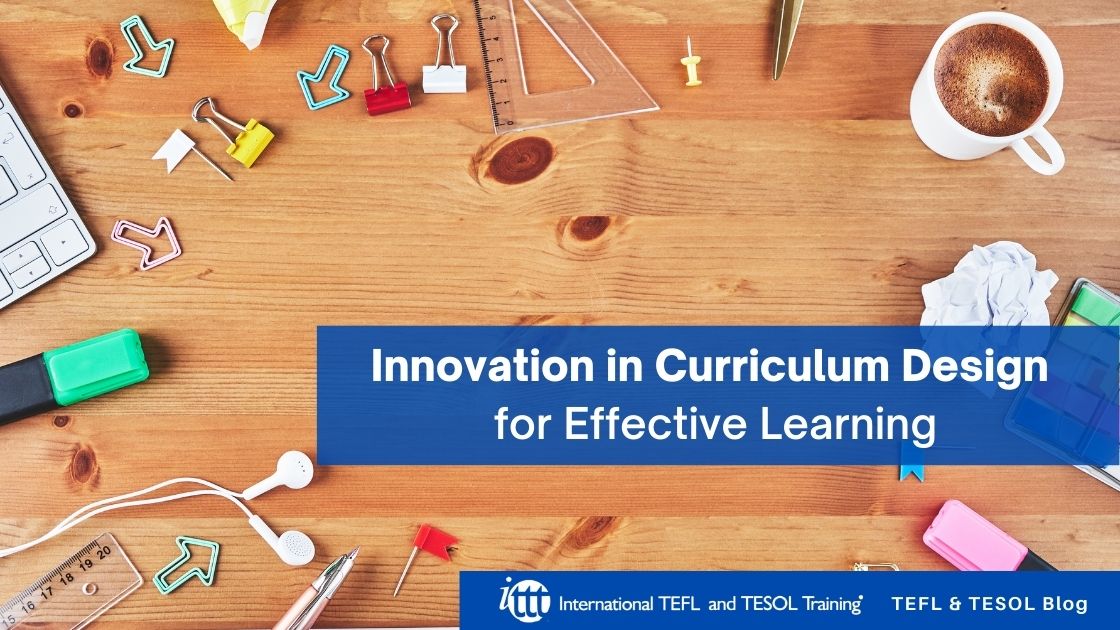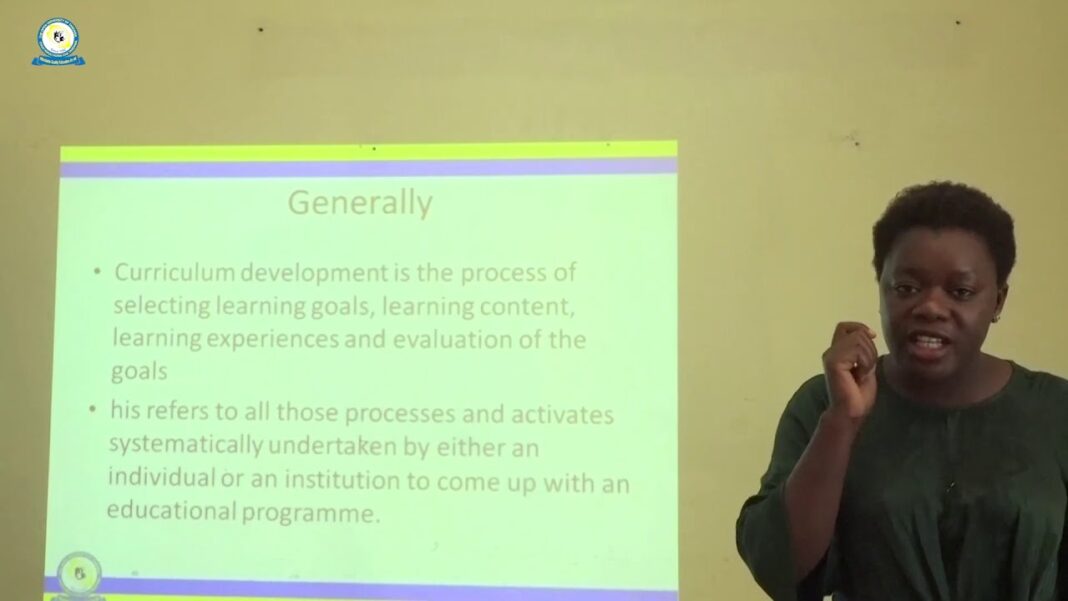The world is changing at an unprecedented pace. Technological advancements, shifts in the global economy, and evolving societal needs are demanding a new breed of learner who is adaptable, innovative, and capable of navigating ambiguity. Traditional curriculum design, often rooted in rote memorization and standardized testing, struggles to equip students for this future. This is where the concept of innovation in curriculum design emerges – a call to action urging educators to reimagine teaching and learning to meet the needs of the 21st century.
Integration of Technology: Emphasizing the use of digital tools and online platforms to enhance learning experiences.
Technology has become an integral part of our daily lives and it only makes sense for it to play a significant role in education as well. Integrating technology into curriculum design not only enhances learning experiences but also equips students with necessary skills for the digital age. According to a survey by the American Association of Colleges and Universities, 80% of employers believe that having technology skills is becoming increasingly important in the workplace. Therefore, curriculum design must embrace technology to prepare students for the demands of the future job market.
Importance of Technology in Curriculum Design:
- Enhancing Engagement and Collaboration: With the use of technology, students can engage in interactive and collaborative learning experiences that go beyond traditional classroom settings. For example, online discussion forums, virtual field trips, and video conferencing allow students to connect with peers from around the world and work together on projects.
- Personalized Learning: Technology allows for personalized learning paths where students can work at their own pace and focus on areas they need more practice in. Adaptive learning software and online quizzes provide immediate feedback and tailor lessons according to individual needs.
- Creating Real-World Connections: The use of technology allows students to see how their learning applies to the real world. For example, creating digital portfolios or using simulation software in science classes gives students a taste of what they can expect in their future careers.
- Accessibility and Inclusivity: Technology makes education more accessible and inclusive for students with disabilities, language barriers, and learning differences. Text-to-speech software, closed captioning, and translation tools make it easier for all students to access and engage with the curriculum.
Challenges of Integrating Technology in Curriculum Design:
- Infrastructure and Access: One of the biggest challenges in implementing technology in curriculum design is ensuring that all students have access to necessary devices and reliable internet connection.
- Training and Support: Teachers need adequate training and support to effectively integrate technology into their lessons. This requires time and resources which can be a challenge for schools with limited budgets.
- Constantly Evolving Technology: Technology is constantly evolving and keeping up with the latest advancements can be a challenge for schools. It is important for curriculum design to be adaptable to changes in technology to ensure its effectiveness.
Personalized Learning Paths: Creating customized curriculum that caters to individual student needs and learning styles.

One size does not fit all when it comes to education. Every student has unique learning needs, strengths, and interests. Personalized learning paths allow for a tailored curriculum that meets the specific needs of each student. This approach moves away from the traditional model of a teacher-centered classroom where all students are expected to learn at the same pace and in the same way. Instead, it puts the focus on the student and their individual learning journey.
Components of Personalized Learning:
- Student-Centered Approach: Personalized learning emphasizes the individual needs and interests of students. This requires teachers to get to know their students on a deeper level and create a learning environment that caters to their specific needs.
- Flexible Pace: With personalized learning, students are given the flexibility to work at their own pace. This allows them to spend more time on areas where they need additional practice and move on from topics they have already mastered.
- Varied Instructional Strategies: Personalized learning takes into account that different students learn in different ways. Therefore, teachers must be prepared to use a variety of instructional strategies to cater to the needs of all students.
- Ongoing Assessment: In personalized learning, assessment is an ongoing process rather than a one-time event. This allows teachers to regularly monitor students’ progress and adjust instruction accordingly.
Benefits of Personalized Learning:
- Increased Engagement and Motivation: When students feel like their individual needs are being met, they are more likely to be engaged and motivated in their learning. This can lead to improved academic performance and a positive attitude towards learning.
- Greater Independence and Responsibility: Personalized learning encourages students to take ownership of their learning journey. By setting their own goals and working at their own pace, students become more independent and responsible for their education.
- Improved Relationships: Personalized learning requires teachers to have a deeper understanding of their students and build strong relationships with them. This not only leads to a more positive classroom environment but also helps teachers better support and guide their students.
Challenges of Implementing Personalized Learning:
- Time Constraints: Personalized learning requires teachers to spend more time creating individualized lesson plans and providing feedback to students. This can be challenging when teachers have a large number of students and limited class time.
- Necessary Resources: To effectively implement personalized learning, schools need adequate resources such as technology, materials, and professional development opportunities for teachers. This can be a challenge for schools with limited budgets.
- Resistance to Change: Personalized learning represents a significant shift in traditional teaching methods and may face resistance from both teachers and students who are used to the traditional model.
Interdisciplinary Approaches: Combining multiple subjects to provide a more holistic and practical learning experience.

Traditionally, education has been taught in silos with subjects being taught separately without much integration. However, the world is not divided into separate subjects and real-world problems often require a multidisciplinary approach. Interdisciplinary curriculum design brings together different subjects to provide a more holistic and practical learning experience for students.
Advantages of Interdisciplinary Approaches:
- Real-World Application: By combining multiple subjects, students can see how their learning applies to real-world problems. This also helps them develop critical thinking skills as they make connections between different subjects.
- Holistic Understanding: Interdisciplinary approaches allow for a more holistic understanding of complex issues. Instead of studying individual aspects of a topic, students are able to see the bigger picture by looking at it from multiple perspectives.
- Engaging and Relevant: By incorporating real-world issues, interdisciplinary curriculum design can be more engaging and relevant for students. They are able to see the practical applications of their learning and understand why it is important.
- Collaboration and Teamwork: When subjects are integrated, students are encouraged to work together and learn from each other’s strengths. This promotes collaboration and teamwork which are essential skills for success in the 21st century.
Challenges of Interdisciplinary Approaches:
- Time Constraints: Combining multiple subjects into one lesson or project can be time-consuming and may require teachers to make adjustments to their existing curriculum.
- Integration of Standards: In some cases, integrating different subjects may require teachers to deviate from prescribed standards. This can be a challenge for educators who face pressure to ensure students perform well on standardized tests.
- Preparation and Collaboration: Effective implementation of interdisciplinary approaches requires preparation and collaboration among teachers. This can be a challenge when teachers have different schedules and teaching styles.
Competency-Based Education: Focusing on students’ mastery of skills and knowledge rather than time spent in class.
The traditional model of education measures success based on the amount of time spent in class rather than actual mastery of skills and knowledge. Competency-based education shifts the focus to students’ mastery of specific skills and knowledge, regardless of how much time it takes. This allows for a more personalized and flexible approach to learning.
Key Components of Competency-Based Education:
- Clear Learning Objectives: In competency-based education, learning objectives are clearly defined and students are aware of what they are expected to learn and demonstrate.
- Multiple Pathways to Mastery: Unlike the traditional model where all students are expected to follow the same path, competency-based education allows for multiple pathways to mastery. This means that students can progress at their own pace and use different methods of learning.
- Continuous Feedback and Assessment: Competency-based education requires ongoing assessment and feedback to ensure students are making progress towards mastery. This also allows for interventions when necessary.
Benefits of Competency-Based Education:
- Personalization and Flexibility: Competency-based education allows for a more personalized and flexible learning experience. Students can learn at their own pace and have the freedom to choose different paths to mastery.
- Focus on Mastery: By shifting the focus from time spent in class to mastery of skills and knowledge, students are able to develop a deeper understanding of topics and are better prepared for real-world scenarios.
- More Relevant and Engaging: Competency-based education focuses on skills and competencies that are relevant and applicable to the real world. This makes learning more engaging and meaningful for students.
Challenges of Implementing Competency-Based Education:
- Standardized Assessments: The current education system relies heavily on standardized tests to measure student success. Competency-based education may face challenges in aligning with these standardized assessments.
- Teacher Training and Support: Competency-based education requires teachers to shift from the traditional role of content delivery to facilitation and assessment. This requires training and support to effectively implement this approach.
- Time and Resources: Transforming education to be competency-based may require significant time and resources, which can be a challenge for schools with limited budgets.
Sustainability and Global Awareness: Incorporating topics on environmental sustainability and global citizenship into the curriculum.
The world is facing numerous challenges such as climate change and increasing inequality. Therefore, it is important for future generations to be equipped with the knowledge and skills necessary to address these issues. Incorporating topics on sustainability and global awareness into the curriculum not only prepares students to be responsible global citizens but also encourages critical thinking and problem-solving.
Importance of Sustainability and Global Awareness in Curriculum Design:
- Preparing Future Leaders: Education plays a crucial role in shaping the values and attitudes of future leaders. By incorporating topics on sustainability and global awareness, we are preparing students to be responsible and compassionate leaders who are equipped to tackle global challenges.
- Promoting Critical Thinking and Problem-Solving: Topics such as climate change and global inequalities require critical thinking and problem-solving skills. By incorporating them into the curriculum, we are encouraging students to think critically about complex issues and come up with solutions.
- Developing Empathy and Understanding: Incorporating global issues into the curriculum helps students develop empathy and understanding towards different cultures and perspectives. This promotes a more inclusive and compassionate society.
Challenges of Incorporating Sustainability and Global Awareness into Curriculum Design:
- Limited Time and Resources: With an already packed curriculum, finding time to incorporate sustainability and global awareness can be a challenge. It may also require additional resources such as training and materials.
- Resistance to Change: Incorporating new topics into the curriculum may face resistance from teachers and students who are used to the traditional model. It is important to have support from all stakeholders to successfully implement this in the curriculum.
Conclusion
Innovation in curriculum design is essential to prepare students for a dynamic future. By shifting the focus from content to skills and competencies, integrating technology, personalizing learning, promoting interdisciplinary approaches, focusing on mastery, and incorporating topics on sustainability and global awareness, we can create a curriculum that is relevant and engaging for students. However, implementation of these innovations may face challenges and require time and resources. It is important for educators to stay updated with the latest trends and innovations in curriculum design and collaborate to create an education system that equips students with the necessary skills to succeed in a constantly evolving world.
